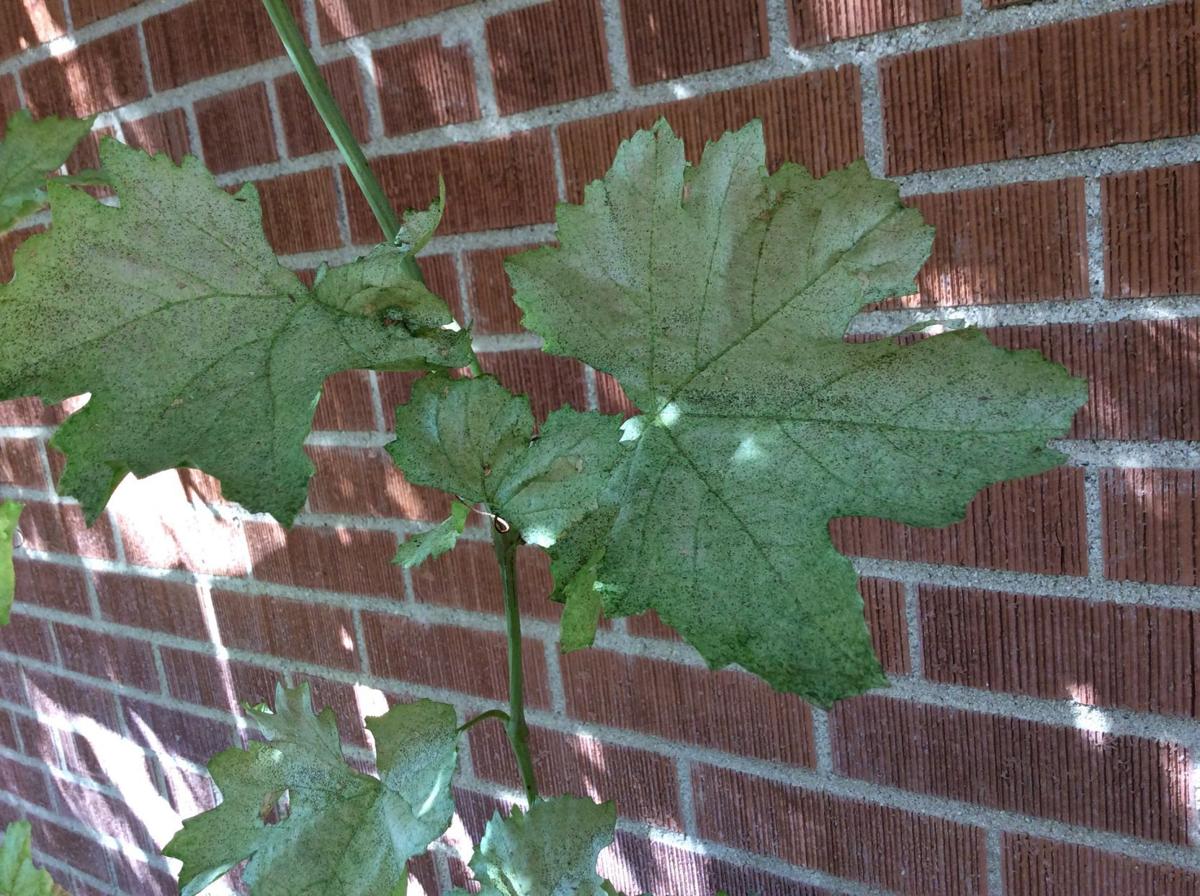Q: I think it’s nearly time to begin pruning my grapevines (two Red Flame and one Thompson green) and seems like it’s a good idea to address last year’s pests. Although the photo shows the arbor in shade, the vines get six to eight hours of sun daily. In the summer, the drip system provides each vine with one gallon per hour, four days a week, for an hour and a half. And last summer, boy did we have bugs. I use Bt for one kind of caterpillar that has been with us since the beginning, coming up on four years, but it didn’t seem to faze them. I’d prefer a systemic, because our monsoons wash sprays off. I’m happy to forgo harvesting grapes for another year or two. What is your recommendation?
A: Bt (Bacillus thuringiensis) is helpful in managing caterpillars such as the grape leaf skeletonizer (Harrisina brillians). Bt doesn’t have any affect on the various species of leafhoppers that are causing the damage in the photo. Leafhoppers suck the sap from leaf cells causing the yellow appearance you are seeing. Grape plants can withstand a good amount of feeding damage before fruit yield is affected so you might not have to do anything. There are also natural enemies that feed on the leafhoppers so you probably already have some help managing them. If you want to determine if treatment is recommended, you can monitor the population by counting the number of leafhoppers per leaf on a random sample of leaves. If the number per leaf exceeds 15, then it might be worth treating. There are systemic insecticides available for this purpose and they can be applied as a soil drench. Active ingredients for these chemicals are toxic to bees and other animals so please follow label instructions if you go this route. So my recommendation is to assess the situation before treating because you might save money by monitoring them this spring.
Peter L. Warren is the urban horticulture agent for the Pima County Cooperative Extension and the University of Arizona. Questions and photos may be emailed to tucsongardensage@gmail.com





